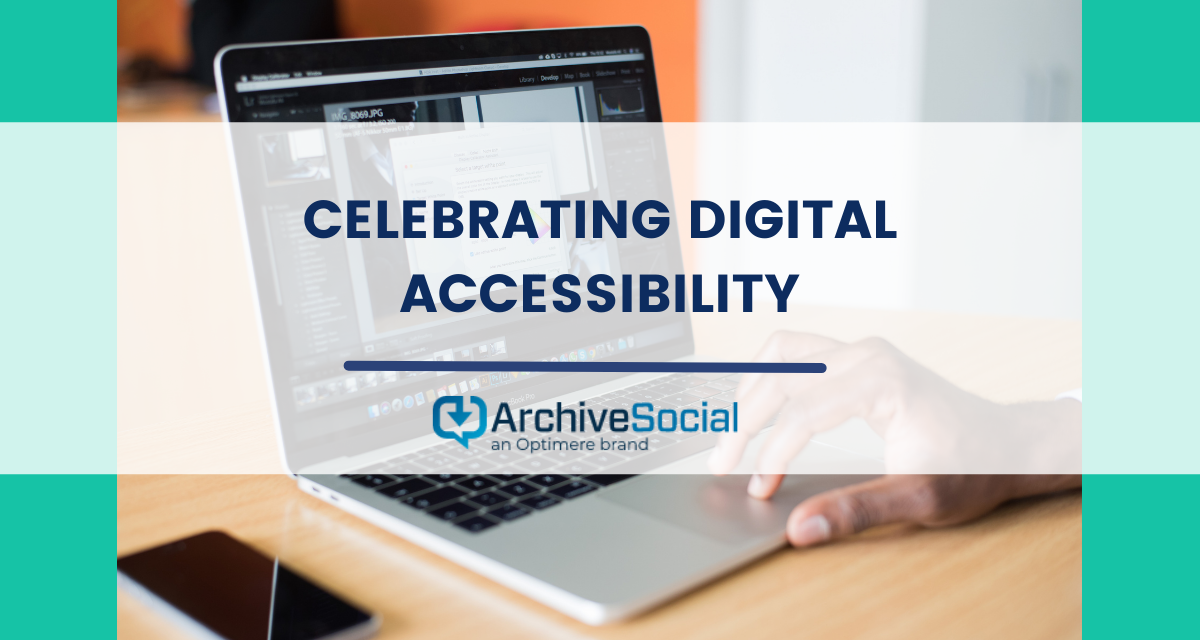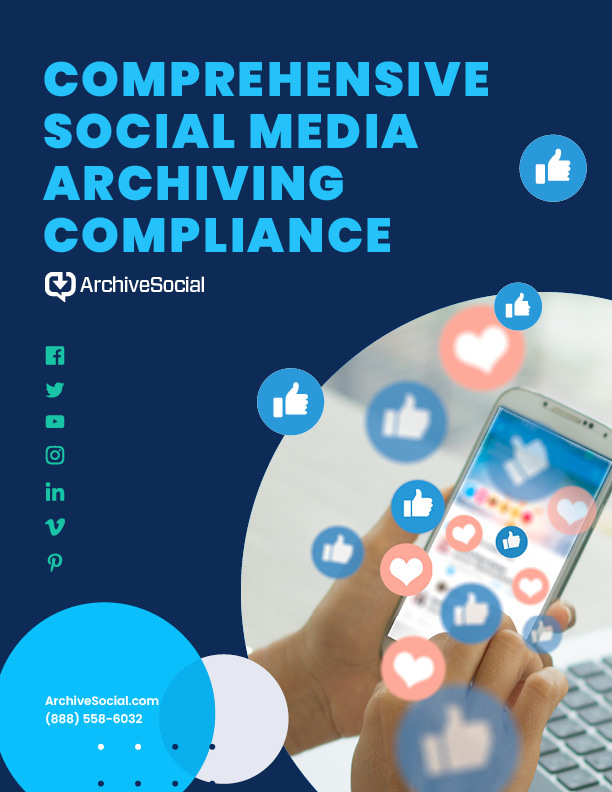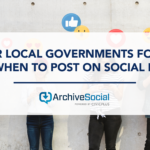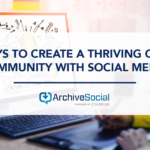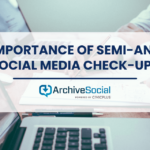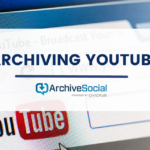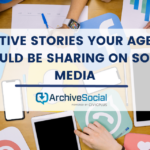May is Global Accessibility Month. Digital accessibility is important to us at ArchiveSocial, so we’re sharing some information and best practices.
Global Accessibility Day
Thursday, May 19, 2022, marks the 11th Global Accessibility Awareness Day (GAAD), and we’re celebrating here at ArchiveSocial. GAAD was started in 2012 by two technology professionals who connected online over a shared belief in the importance of digital accessibility. Their purpose in creating this observance was to shine a light on the importance of digital inclusion and accessibility. Tech moves fast, but it shouldn’t leave anyone behind.
At ArchiveSocial this is an extremely important topic for us. Our entire purpose is to build trust in digital communication by empowering local agencies and organizations to deliver accessible and transparent communications for their communities. So we’re highlighting some social media best practices for accessibility that you can apply to ensure you’re delivering the best experience for everyone.
Why digital accessibility is important
Of course, people with disabilities may experience websites and online content differently from those without disabilities. But being digitally accessible isn’t about creating the same experience, but supporting the same outcomes for everyone who interacts with your online presence.
There are several common disabilities or impairments that may affect the way a user experiences content online, including visual, hearing, motor, and cognitive impairments. When designing web pages and graphics for social media, it is important to consider best practices for accessibility. That way, your message is optimized to reach all of your intended audience.
It’s also important to be in compliance with the Americans with Disabilities Act and, if your agency receives federal funding, the Rehabilitation Act of 1973. To be compliant, you must offer qualified individuals with disabilities equal access to programs, services, and activities. These services include information your agency provides online. Download our accessibility checklist here and watch our accessibility webinar here.
Best practices for accessibility on social media
Most public agencies and organizations now provide information – news, announcements, and event details – to your constituents through social media. Facebook, Twitter, Instagram, and other platforms do their part to comply with federal regulations to make their content accessible. But there’s more public communicators can be doing to ensure a digitally accessible experience on their social media pages.
1. Make sure videos have closed captions whenever possible.
Videos are one of the top-performing content formats across social media. When you produce a video to share, make sure you’re including closed captions. This helps people with hearing impairments to take in the information you’re sharing and enjoy the engaging content you’re producing.
- If you’re sharing your videos through YouTube, YouTube offers several ways to add captions or subtitles to your video. They also use speech recognition technology that sometimes can provide automatic captions.
- If you want to upload videos directly through each platform, you can still ensure digital accessibility with captions. In late 2021, Twitter added automatic captions to all uploaded videos. Facebook Business also has an easy way to add automatically generated captions. You can even edit them to make sure they’re correct.
Check your videos for flashing or strobing lights. If you notice this happening in the video, add a warning to the beginning of it so that people with epilepsy or similar conditions know to avoid it. Alternatively, consider editing the video to remove the offending section before posting.
2. Don’t post images of text without captions, and choose your colors wisely.
It’s tempting when you’ve created a beautiful flier advertising an upcoming event to post it as an image on social media. And you can! But when you do that, make sure you’re including a detailed caption that contains all the information from the flier.
Screen readers help people with visual impairments take in information online. But they read text, not images. By adding a comprehensive caption to image-based posts, you’re helping people with visual disabilities have a successful interaction with your content. Captions are also a great place to provide extra detail about your events, activities, and announcements, so don’t skip them!
When you do share images with text on them, make sure you’re using high-contrast colors and fonts that are large enough to be read easily. Not everyone with visual impairments uses a screen reader. And don’t rely on color to convey – remember that someone with colorblindness may not be able to pick out a red dot on a green field. Check out this color contrast checker to see if you’re choosing the right colors to convey your message.
3. Add alt text to images.
Missing and incorrect alt text is one of the biggest lingering issues with digital accessibility. What’s alt text? Alt (short for “alternative”) text is HTML code that creates a description of an image in order to make images more accessible to people with visual impairments. You’ve probably seen it or been asked to fill it in when you add images to Microsoft Word docs or a blog post. So how can you incorporate it into your social media images?

Complete and accurate alt text is important to help visually impaired users understand what images are onscreen. Be as clear and thorough as you can. For example, good alt text for this image would be “Two Rottweiler puppies looking through a fence”.
Facebook adds automatic alt text to all your photos, which is helpful, but they may not always get it right. You can edit the automatic alt text to new images by following Facebook’s guide here. For other platforms, check out DigitalMaas’ complete guide.
4. Stay up-to-date on digital accessibility tools.
Digital accessibility is constantly evolving. Developers are getting better all the time at providing great digital experiences for users with disabilities, and they’re creating new tools for you to do the same. This is especially important for content on your agency’s website. On social media, the platforms do much of the work. On your website, your agency has to take more ownership.
But it’s a lot to keep track of in addition to other job duties. So it’s a good idea to find a partner you can trust to help you navigate digital accessibility on your agency’s website. Monsido, is a leading provider of web accessibility solutions that can help you stay ahead of accessibility issues with industry-leading functionality.
Monsido automatically scans your site to find any possible issues that may hinder accessibility, giving you an overview of how your website is doing, as well as recommendations on how to address them. Get more accessibility news and best practices from their blog. And don’t forget to register for our upcoming webinar with Monsido: Intro to Web Accessibility for Government Communicators.
Check out other cool accessibility resources:

